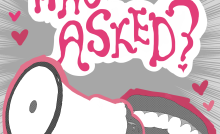The Pitt Prescription | End confusion at the pharmacy: Common OTC medication mistakes


With cold and flu season underway, plus the added risks of COVID-19 and RSV this year, many people are getting sick and turning to over-the-counter (OTC) medications to help alleviate some of their symptoms. While OTC products are relatively safe, they still have risks and require proper use.
Anyone can accidentally misuse OTC medication if the consumer does not read the label or follow the directions properly. Common OTC products that are accidentally misused include pain relievers, cold and cough medicine, sleep aids and pediatric OTC products.
One example of accidental misuse includes taking multiple medications that work the same way.
In other words, these products often have the same active ingredients but may advertise treating different symptoms. Active ingredients are the components in a medication that have an effect on the body — the chemicals in the medicine that make them work to fight different symptoms. Knowing what active ingredients are in each medication you take is a very important aspect of medicine use specifically because of safety concerns and the potential for accidental overuse or overdose.
For example, Tylenol is advertised as a pain reliever for bodily aches and pains, whereas Nyquil is advertised as a cough and flu treatment. However, what many consumers don’t realize is that both of these products have an active ingredient of acetaminophen. Someone walking into the pharmacy may not realize this and may take Tylenol for their headache and Nyquil for their cold symptoms, resulting in a double dose of acetaminophen. If this is repeated over the course of several days, the person is now at risk for significant side effects, like liver failure.
Another common occurrence is for someone dealing with allergies to take an antihistamine like Benadryl and then also take a sleep aid like ZzzQuil to help them sleep while suffering from bothersome allergy symptoms. Like the previous example, this is an accidental overdose of the active ingredient diphenhydramine. Overusing antihistamines can lead to several unpleasant side effects like dizziness, a “hangover effect” the next morning, dry mouth, and even being unable to wake up or stay awake the following day.
Accidental misuse can also occur if a consumer takes or administers the wrong dose of an OTC medication.
Several products, especially liquid formulations, come with dosing tools created to provide a precise amount of medication when used appropriately. Many consumers will use household utensils rather than the tool that the medication comes with to dose the products instead. One major example of this is many parents using household teaspoons to measure liquid medications for their children.
Spoons come in many different shapes and sizes, and they are not calibrated dosing tools for liquid medicine. The CDC has a medication safety campaign in which they say “Spoons are for Soup, Milliliters are for Medicine” and this is a great way to remember that you should beasure out medications precisely with the tools that come in their packaging. Common household spoons should never be used to measure medicine.
Accidental misuse of a medication can also take the form of something as simple as not understanding the effects of the medications.
This occurs when consumers don’t read medication labels or safety information and end up taking a medication that is not what’s best suited for them or may negatively contribute to another condition they have.
For example, a patient may take a nasal decongestant like Sudafed (pseudoephedrine) for their congestion symptoms, but they also suffer from insomnia. Pseudoephedrine is a stimulant and has properties that contribute to increased levels of alertness and wakefulness. For a patient struggling with sleep, taking a stimulant-based decongestant is a bad idea because it can further contribute to their inability to fall asleep or it may be the main cause behind their insomnia.
As discussed in a previous edition of TPP, getting the proper amount of sleep is incredibly important to someone’s overall health. So for this patient, even though their congestion may improve, the negative effects on their overall health far outweigh the benefits of using this medication. This is why reading the labels, warnings and directions on OTC medications is so important and something that every healthcare worker advocates for.
Finally, taking a medication for longer than the recommended time can lead to serious consequences and is another very common way people accidentally misuse OTC medications.
Almost all OTC products have very specific guideline recommendations for correct duration of use. This doesn’t necessarily mean that using a medication for longer will absolutely harm you, but once you use a medication for a certain amount of time, there are possible negative effects that a healthcare provider needs to monitor. This is why many medication labels have a section that says something along the lines of “stop use and consult a doctor if your symptoms persist longer than X days.”
One prime example of this is the nasal decongestant spray Afrin (oxymetazoline). This medication is usually great for alleviating congestion. However, there is a very strict three-day limit for use. This is because overuse of oxymetazoline has been shown to lead to something called rebound congestion. There are several potential explanations for this phenomenon, but many professionals believe it occurs because of overuse of nasal decongestants leading to inadequate blood supply from constant constriction of blood vessels in the nose. This, in turn, causes swelling to occur in the nasal passages and ultimately worsens congestion.
If the consumer is unaware of this three day recommended duration of use, they could ultimately end up with congestion worse than what they started with. Not to mention, rebound congestion can be difficult to treat and can often take a long time to clear. This doesn’t mean that people should stay away from nasal decongestants all together, but it does demonstrate why reading the full medicationprior to use is so important.
So many issues can arise if a consumer takes OTC products incorrectly. Whether it’s because you’re not getting a high enough dose or taking too much of one active ingredient, there are risks to every mistake. Reading the product labels and consulting your local pharmacist can prevent medication errors or accidental medication misuse from occurring. If you’re ever unsure of how to properly use a medicine, pharmacists are the best resource to go to for answers.
Elizabeth writes primarily about self-care and pharmacological topics. For questions, comments or concerns, you can reach her at ead85@pitt.edu.
Recent Posts
SGB addresses concerns about ICE presence on campus, hears SJP lawsuit against administration, approves governing code bill
At its weekly meeting on Tuesday at Nordy’s Place, Student Government Board heard concerns about…
ACLU of Pennsylvania sues Pitt over SJP suspension
The ACLU of Pennsylvania filed a federal civil lawsuit against the University of Pittsburgh and…
Marquan Pope: The ultimate shark
One of the most remarkable things about sharks is that an injury doesn’t deter them.…
Who Asked? // Do we really get a summer vacation?
This installment of Who Asked? by staff writer Brynn Murawski mourns the seemingly impossible perfect…
Notes From an Average Girl // Notes from my junior year
In this edition of Notes From an Average Girl, senior staff writer Madeline Milchman reflects…
Meaning at the Movies // The Power of the Movie Theater
In this edition of “Meaning at the Movies,” staff writer Lauren Deaton discusses her love…

